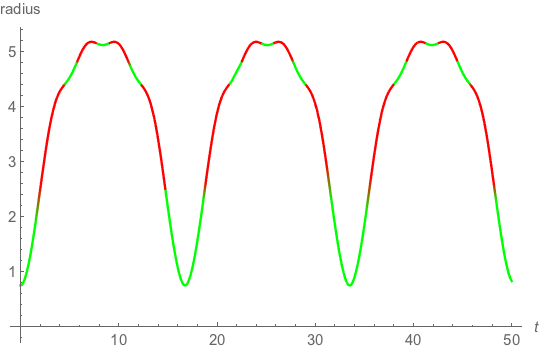This is my answer, but I've not found other descriptions of this simple model.
The Klein-Gordon wave equation of motion in the Robertson-Walker (RW) metric with scale factor a(t) as a function of time,
−1,a2(t)1−Kr2,a2(t)r2,a2(t)r2sin2θis
ψ″(t)=−3H(t)ψ′(t)−ω2ψ(t)
where H(t)is the Hubble parameter defined in terms of the scale factor.
H(t)=˙a(t)a(t)
and the constant frequency with units second−1,
ω=MKGc2ℏ
The canonical energy-momentum tensor for the KG wave equation is diagonal with two independent components (0,0), (1,1) which are the matter and pressure energy density.
μ=ℏω−1ψ′∗ψ′+MKGc2ψ∗ψ
p=ℏω−1ψ′∗ψ′−MKGc2ψ∗ψ
The time derivative of the real-valued densities is provided by the KG wave equation.
˙μ=−3H(p+μ)
(˙p−˙μ)2=4ω2(μ2−p2)
The pressure must go negative to get a bounce, but must be less than the energy density of matter at the same location.
−1⩽pμ⩽−13
The green area is where the pressure is in this negative region.

 Q&A (4909)
Q&A (4909) Reviews (205)
Reviews (205) Meta (440)
Meta (440) Q&A (4909)
Q&A (4909) Reviews (205)
Reviews (205) Meta (440)
Meta (440)